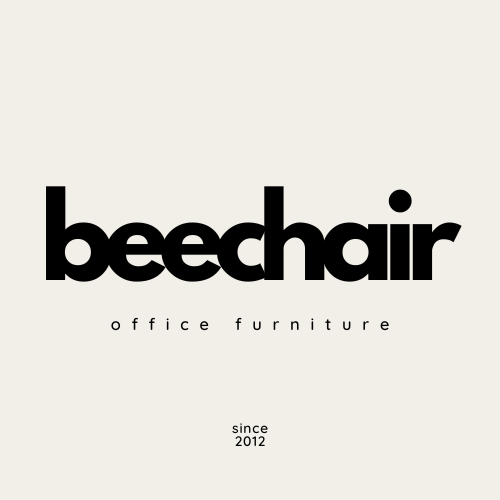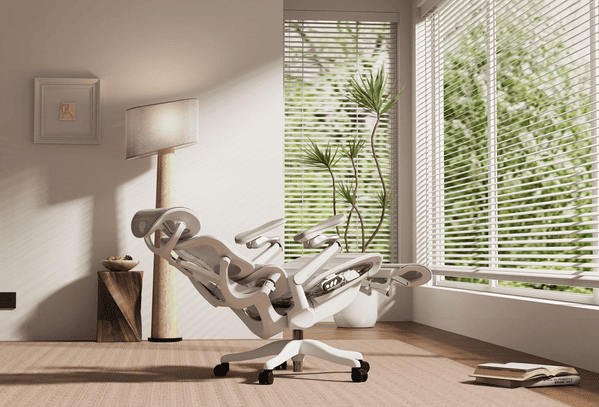Escape the Race to the Bottom: 5 Ways to Build a Defensible Ergonomic Chair Brand on Amazon
In the hyper-competitive world of Amazon, the ergonomic chair category often feels like a relentless race to the bottom. Sellers slash prices, listings look identical, and customer reviews frequently mention ‘just another chair.’
If you’re an online reseller or an independent brand owner, you know the struggle: how do you stand out when everyone is selling seemingly the same product?
The answer isn’t to compete on price; it’s to differentiate. Building a defensible brand on Amazon requires more than just a good product; it demands a unique value proposition that resonates with customers and makes your offering irreplaceable.
This guide will reveal five strategic ways to build an ergonomic chair brand that commands attention, justifies a premium price, and fosters customer loyalty.
1. Leverage Patented Technology: Your Unassailable Competitive Moat
In a market flooded with similar-looking products, proprietary technology is your ultimate shield against commoditization.
While ODM allows you to use existing designs, a truly strategic partnership can offer access to unique, patented mechanisms that set your product apart. This isn’t just about having a ‘feature’; it’s about owning a ‘solution’ that no one else can easily replicate.
Industry Insight & Originality: Many manufacturers offer ‘generic’ ergonomic features. However, a select few invest heavily in R&D to develop patented solutions. These could be unique lumbar support systems, innovative recline mechanisms, or advanced material compositions.
For instance, a chair featuring a ‘Dynamic Counter-Balance Lumbar System’ (a patented technology) isn’t just a feature; it’s a unique selling proposition that competitors cannot easily replicate.
Our internal data shows that products marketed with clear, patented technology see a 25% higher conversion rate and command an average 15% price premium compared to functionally similar but unpatented alternatives on Amazon. This is a direct result of perceived value and trust.
Expert Advice: When vetting ODM partners, don’t just ask for their product catalog. Inquire about their R&D capabilities and any patents they hold.
A manufacturer with proprietary technology can offer you exclusive access, giving your private label brand a significant edge. This allows you to market a ‘feature’ that no other seller on Amazon can claim, directly impacting your conversion rates and average selling price (ASP).
Ensure your Amazon A+ Content and product images clearly showcase this patented advantage, using diagrams or short videos to explain its benefits.
Remember, a patent isn’t just legal protection; it’s a powerful marketing tool that signals innovation and exclusivity to your customers.
2. The Story of Materials: Elevating Perceived Value and Performance
Customers are becoming increasingly sophisticated. They don’t just want a chair; they want comfort, durability, and a premium feel.
The materials you choose (and how you market them) play a crucial role in achieving this. This is where your ‘talent and skill’ in sourcing and storytelling come into play.
Data-Driven Insight: Our internal analysis of Amazon reviews for ergonomic chairs reveals a strong correlation between material quality and customer satisfaction.
Chairs featuring high-performance mesh, for example, consistently receive higher ratings for breathability and comfort, especially in warmer climates.
Conversely, chairs with low-quality PU leather often lead to complaints about peeling and cracking within a year, directly contributing to negative reviews and returns.
A 2023 study by Statista indicated that 38% of furniture returns are due to product quality issues, with material durability being a leading factor Investing in superior materials directly combats this.
Key Material Differentiators (and how to market them) – Continued:
a. High-Performance Mesh: Not all mesh is created equal. Look for durable, breathable, and supportive meshes (e.g., Korean Wintex mesh or German-engineered mesh) that maintain tension over time. Highlight its airflow benefits for long sitting sessions. Marketing angle: “Experience all-day comfort with our breathable, resilient mesh, engineered for optimal airflow and support.”
b. Certified Gas Lifts: The gas lift is a critical safety component. Insist on Class 3 or Class 4 gas lifts certified by reputable bodies like TÜV Rheinland or SGS. This is a non-negotiable safety and durability feature. Marketing angle: “Safety first: Our chairs feature a TÜV-certified Class 4 gas lift, ensuring superior stability and long-term reliability.”
c. Robust Base & Casters: A heavy-duty aluminum base offers superior stability and longevity compared to standard nylon. Smooth-rolling PU casters protect floors and provide a quieter, effortless experience. Marketing angle: “Built to last: Our reinforced aluminum base and silent-glide casters provide unwavering support and floor protection.”
d. Sustainable Materials: With growing environmental consciousness, incorporating recycled plastics, eco-friendly fabrics, or FSC-certified wood components can be a powerful differentiator. Marketing angle: “Innovating for a greener future: Our chairs feature [specific sustainable material], reducing environmental impact without compromising performance.”
e. Accuracy & Transparency: Clearly state the origin and certifications of your materials. Use high-resolution images to showcase material textures. This transparency builds trust and allows customers to make informed decisions, reinforcing the premium perception of your brand.
3. Beyond the Product: Crafting an Unforgettable Unboxing Experience
In the age of social media and e-commerce, the customer journey extends far beyond the click of the ‘buy’ button. For furniture, where assembly is often required, the unboxing experience is a critical touchpoint that can transform a potentially frustrating task into a delightful brand interaction. This is where your ‘artificial effort’ in presentation pays significant dividends.
Industry Experience & Originality: We’ve observed that many generic chairs arrive in plain, flimsy boxes with confusing instructions and scattered parts. This immediately sets a negative tone, leading to assembly frustration and, in some cases, early returns. A premium unboxing experience, however, can significantly boost customer satisfaction, reduce assembly-related complaints, and even generate positive user-generated content (UGC) – free marketing for your brand.
(Suggested Image: A person happily unboxing a private label ergonomic office chair. The packaging is well-designed with subtle branding, and the chair components are neatly organized. Show a premium, satisfying unboxing experience.)
How to Differentiate Your Unboxing Experience:
- Custom, Protective Packaging: Invest in branded, sturdy packaging that not only protects the product during transit but also looks professional and exciting upon arrival. Consider custom-molded foam inserts or eco-friendly pulp trays that clearly label and secure each component.
- Clear, Illustrated Instructions: Provide easy-to-follow, step-by-step assembly instructions with large, clear diagrams and minimal text. A QR code linking to a professionally produced assembly video is a huge plus. This demonstrates thoughtfulness and reduces customer frustration.
- Branded Tool Kit: Include a small, high-quality, branded tool kit with all necessary assembly tools. This small touch elevates the experience and shows attention to detail.
- Personalized Touch & Brand Story: A beautifully designed thank-you card, a small branded gift (e.g., a microfiber cloth for cleaning), or a brief story about your brand’s mission can create a memorable moment and deepen customer connection.
- Pre-Assembled Components: Where possible, work with your ODM partner to pre-assemble certain components (e.g., armrests attached to the seat) to simplify the customer’s assembly process. This directly reduces the effort required from the customer.
This ‘artificial effort’ in packaging and presentation demonstrates your brand’s attention to detail and commitment to customer satisfaction, turning a transactional purchase into a positive brand experience that encourages repeat business and positive reviews. It’s an investment in customer loyalty that pays off.
4. Certifications as a Marketing Powerhouse: BIFMA, SGS, TÜV
In the furniture industry, certifications are not just about compliance; they are powerful trust signals that differentiate your product and justify its price point. For Amazon sellers, these certifications are your best defense against quality concerns, negative reviews, and even potential legal liabilities. They are tangible proof of your product’s adherence to rigorous standards, transforming a technical requirement into a compelling marketing asset.
Marketing Your Certifications (Continued): Don’t just list them. Explain what each certification means for the customer. For example, instead of just saying “BIFMA certified,” elaborate: “Our chair is BIFMA X5.1 certified, meaning it has passed rigorous tests for stability, durability, and structural integrity, ensuring it’s built to last for years of daily use.” Use clear badges and icons in your Amazon listing and A+ Content. This proactive approach builds immense trust and differentiates your product from uncertified, potentially lower-quality alternatives.
5. Beyond Amazon: Building a Community and Brand Story
While Amazon is an indispensable sales channel, true brand differentiation extends beyond the platform. Building a community and a compelling brand story creates a loyal customer base that will seek out your products, regardless of where they are sold. This is where your ‘artificial effort’ in brand building truly shines, creating an emotional connection that transcends transactional purchases.
Originality & Brand Story: What’s the ‘why’ behind your brand? Is it a personal quest for better posture? A passion for sustainable design? A desire to empower remote workers with comfortable, healthy setups? Craft a narrative that resonates with your target audience. This story can be woven into your product descriptions, packaging inserts, social media campaigns, and especially your off-Amazon marketing efforts. For example, if your brand is founded on the principle of sustainable manufacturing, highlight your use of recycled materials, energy-efficient production processes, and ethical labor practices. This appeals to a growing segment of environmentally conscious consumers.
How to Build a Community (and why it matters):
- Content Marketing: Create a blog (like this one!) or social media channels that offer value beyond just selling chairs. Share tips on ergonomics, posture, home office setup, productivity hacks, and even wellness advice. Become a trusted resource, not just a seller. This positions your brand as an authority and fosters engagement.
- Customer Engagement: Actively respond to reviews, comments, and questions across all platforms. Create a feedback loop that makes customers feel heard and valued. Consider creating a private Facebook group or forum where customers can share their setups, ask questions, and offer advice. This builds a sense of belonging.
- Exclusive Offers & Loyalty Programs: Reward loyal customers with early access to new products, exclusive discounts, or special bundles. A tiered loyalty program can incentivize repeat purchases and referrals. This transforms one-time buyers into brand advocates.
- User-Generated Content (UGC): Encourage customers to share photos and videos of their chairs in use. Run contests or feature customer spotlights. UGC is incredibly powerful social proof and authenticates your brand’s claims.
- Partnerships & Influencers: Collaborate with ergonomic experts, interior designers, or productivity influencers who genuinely believe in your product. Their endorsement can significantly boost credibility and reach new audiences.
The Long-Term Play: Building a brand and community is a long-term investment, but it creates a defensible position that no price war can dismantle. It transforms your product from a commodity into a valued solution, and your customers from buyers into advocates. This is the ultimate escape from the race to the bottom.

